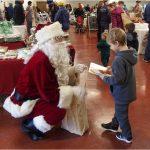In the age of “Iron is King,” who exactly were the people that fueled Hopewell Furnace? Nestled within the setting of Hopewell Furnace was a home known as the Brison House. This house carries the story of a hard-working woodcutter, an African American man, George Brison, who archeologists hope to bring back to life through their excavations.
This week, NPS Archeologists will continue archeological excavations that began in 2019. This project is supported through the Civil Rights Initiative of the National Park Service, which supports park efforts to expand the understanding and public interpretation of African American histories and heritage within the United States. Over one hundred African Americans worked at Hopewell Furnace throughout its operation. During initial excavations, artifacts were uncovered that revealed some insight into what life may have been like for George Brison. In addition to the ongoing archeology, park staff and researchers will continue to engage with African American histories to inform future programming and outreach efforts.
Archeologists from the Northeast Archeological Resources Program will be on site Saturday, July 17th from 10:00 AM until 4:00 PM. Visitors will have the chance to interact with archeologists, learn more about what they are uncovering, and touch artifacts uncovered during the excavations.
Hopewell Furnace National Historic Site is the site of a cold-blast, charcoal-fueled iron furnace which operated from 1771 to 1883. The park today contains both the main furnace buildings themselves, as well as the house of the ironmaster and owner of the furnace, several tenant houses, and much of the surrounding land that was used to supply farm goods and charcoal for the furnace operation.
Visitors are asked to social distance to allow for safe interactions during this program. To learn more about the park and project visit: www.nps.gov/hofu




